Passwords are the first line of defense in protecting our online accounts, yet weak and reused passwords continue to be a major cause of security breaches.
Despite growing awareness about digital safety, many people still use easily guessable passwords or reuse the same ones across multiple sites, making it easier for hackers to gain access.
In fact, a large percentage of data breaches occur because attackers exploit these vulnerabilities rather than relying on complicated hacks.
Understanding the current state of password security is crucial, so this article shares the latest password stats on breaches, password reuse, and more so you know where the risks lie and how you can dodge them better.
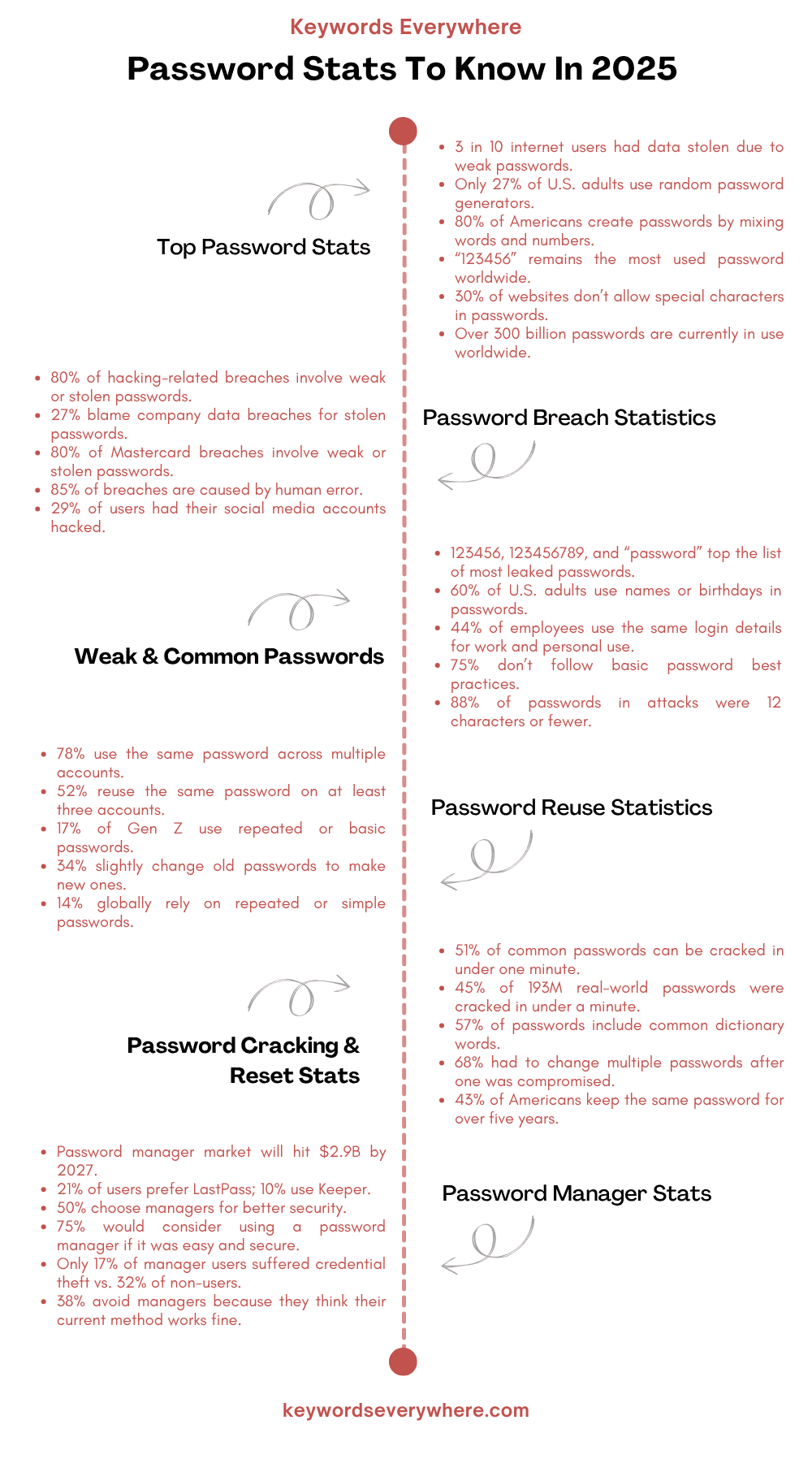
Top Password Stats: An Overview
When you look at how often passwords are misused, guessed, or completely forgotten, it’s no surprise that they remain one of the biggest weak spots in our digital lives.
Here are the top password stats that reveal just how common password-related issues truly are, from everyday habits to the most serious oversights occurring at both personal and corporate levels.
1. Around 3 in 10 internet users have had their data stolen because they used a weak password.
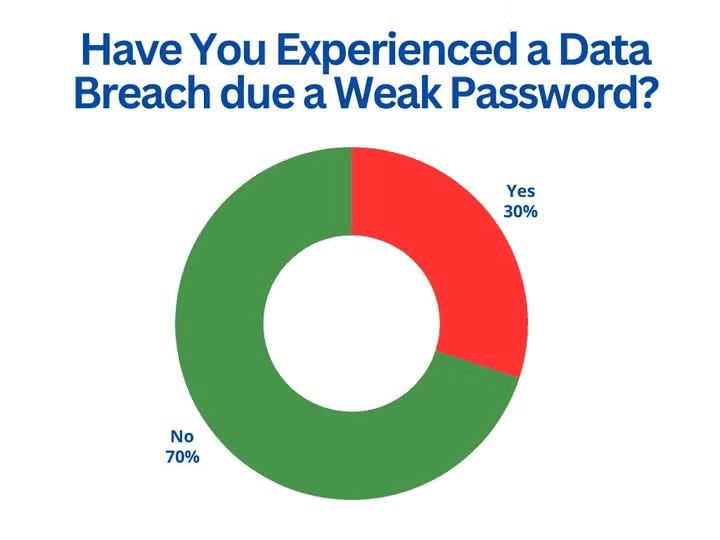
Hackers crack weak passwords in seconds
2. Only 27% of U.S. adults use random password generators, which means most people are still creating passwords on their own.
3. Nearly 80% of Americans create passwords by simply mixing words and numbers, a method that may seem clever but is often not strong enough to stop hackers.
4. When attackers break into accounts, they often succeed using basic terms like “password,” “admin,” “welcome,” or “p@ssw0rd”—and yes, “123456” is still the most common password used today.

Most popular passwords worldwide
5. Some websites make it harder to create strong passwords—30% don’t allow special characters, and 17% don’t even set a minimum length, making it easier for weak passwords to slip through.
6. Currently, over 300 billion passwords are being used worldwide by both humans and machines.
7. People who don’t use a password manager are three times more likely to become victims of identity theft because storing passwords on your own often leads to weaker, reused ones.
8. Only about half of internet users truly understand what makes a password secure, leaving a lot of room for mistakes that hackers are ready to take advantage of.
9. According to Keywords Everywhere, Google sees a high number of monthly searches for password managers, showing how important they’ve become—especially in response to recent data breaches.
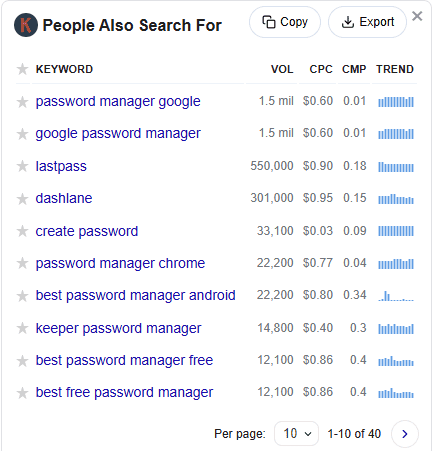
Password Breach Statistics
Every year, data breaches tied to weak or stolen passwords cause massive damage, and while people often think of hackers using high-level tools, the truth is that many of these attacks succeed simply because someone used a bad password or didn’t protect it well.
In fact, over 80% of hacking-related breaches are due to stolen or weak passwords.
Below are the password breach stats that reveal how often weak passwords lead to major security incidents.
10. When asked how their passwords got stolen, 27% of people blamed data breaches at companies, showing that security failures outside the user’s control still put individual accounts at risk.
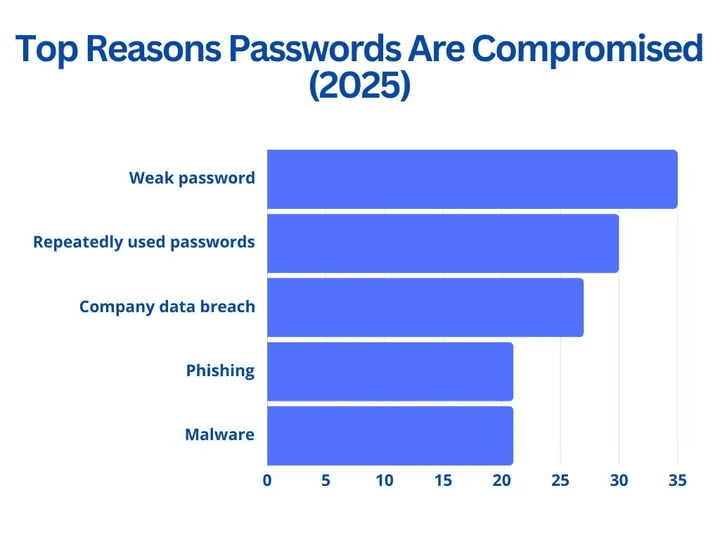
Top reasons passwords are compromised
11. Mastercard reports that 80% of confirmed data breaches involving their customers are tied to weak or stolen passwords.
12. 30% of cybersecurity professionals, employees, and organization leaders say they’ve experienced a security breach caused by weak passwords.
13. 85% of all data breaches involve human mistakes, including falling for phishing scams, using stolen credentials, or making avoidable errors.
14. Social media accounts are the top target for hackers, with 29% of users reporting attacks on them, while 15% said their email accounts were hacked.

Passwords are most likely to be stolen from social media accounts
15. Brute force attacks—where hackers try every possible password—are more likely to work when weak or default passwords are used, though they only appeared in 2% of breaches in 2024.
16. One in five people knows they’ve had at least one password exposed in a data breach or listed on the dark web.
17. 39% of people don’t know if they’ve been hacked, and 32% aren’t sure if their passwords are on the dark web. Even among those who are aware, 9% took no action at all, leaving their accounts vulnerable to further attacks.
18. Multi-factor authentication (MFA) can block 96% of mass phishing attacks and 76% of targeted attacks, making it one of the most effective methods for protecting accounts.
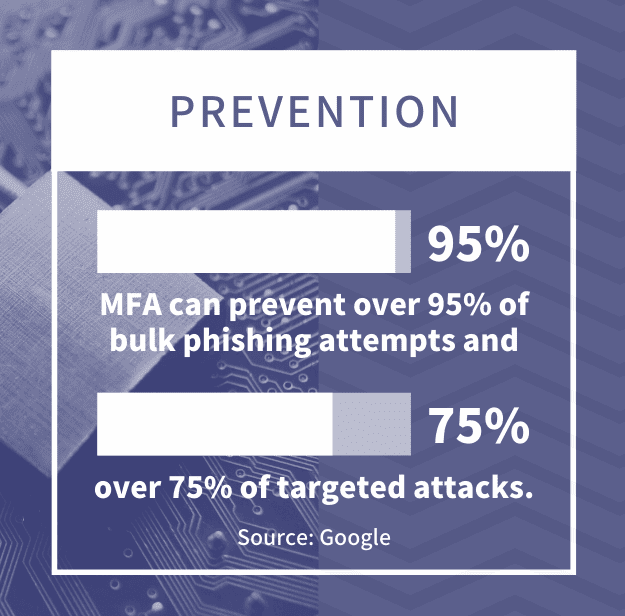
MFA can prevent password attacks
19. Between 2017 and 2020, hackers published over 555 million stolen passwords on the dark web, many of which were later used in large-scale login attacks across various platforms.
Weak & Common Password Statistics
Even though most people know by now that passwords like “123456” or “password” are risky, millions still use them.
Are you one of them? If yes, then you’re in trouble.
The following password stats reveal just how widespread these weak and overused passwords are, along with the surprising ways they continue to appear in major data leaks and security reports across the internet.
20. Cybernews reviewed over 15 billion leaked passwords and found that the most common ones were shockingly weak—with the top five being: 123456, 123456789, qwerty, password, and 12345.
21. About 60% of U.S. adults admit to using names or birthdays in their passwords, a habit that makes them easier to guess.
22. A Google and Harris Poll found that 33% use a pet’s name, 22% use their own name, 15% use their partner’s name, and 14% use their child’s name when creating passwords.

Majority of US adults use a name in their passwords
23. When it comes to work passwords, 34% of employees use their partner’s name or birthday, and 31% use their kids’ information.
24. Even more concerning, 44% of employees admit they use the same login details for both personal and work accounts.
25. A survey of over 8,000 people in the U.S., UK, France, and Germany found that 75% don’t follow basic password best practices, leaving many accounts vulnerable.
26. Nearly half of Americans (46%) say they intentionally create passwords that are very easy to remember, even if they know those choices aren’t very secure.
27. About 69% of Americans feel overwhelmed by the number of passwords they have to manage, and 45% say they’re anxious about how strong their passwords are.
28. More than half of U.S. adults still rely on unsafe methods to store their passwords, such as using browser autofill, writing them down, or attempting to memorize them.
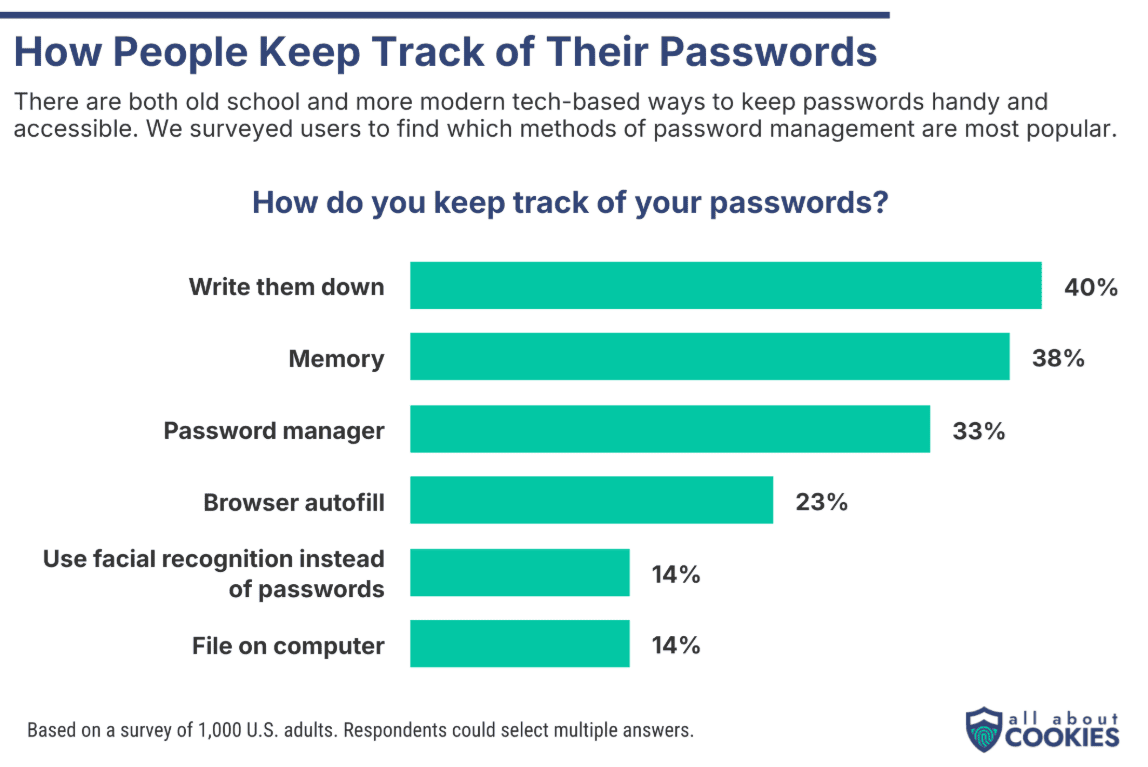
How people keep track of their passwords
29. 88% of passwords used in successful attacks were 12 characters or fewer.
30. 79% of users say they make passwords by mixing words and numbers.
31. 64% of people use at least eight characters in their passwords.
32. Nearly 19% of hacked passwords were made up of only lowercase letters.
Password Reuse Statistics
It might feel harmless to use the same password for a few different accounts or to share a password with a family member, but that’s exactly how small mistakes can turn into big problems.
Here are the latest stats on password reuse that show how often people reuse and why those habits are putting more data at risk than most realize.
33. A recent Forbes Advisor study found that 78% of people use the same password for more than one account, which means one stolen login can lead to multiple account breaches.
34. Over half of users—52%—reuse the same password on at least three different accounts.

Password reuse stats
35. Almost 1 in 5 U.S. adults admit to recycling the same passwords across multiple logins, making it easier for hackers to break in through repeated guessing.
36. 14% of people around the world say they rely on simple passwords or use repeated variations of the same one, often just adding a symbol or number to keep track.
37. Of the 44% of people who claimed their passwords were “well-managed,” many also admitted they just reused the same variations.
38. Gen Z is especially at risk, with 17% admitting they use basic, repeated passwords, making them easy targets for automated attacks like credential stuffing.
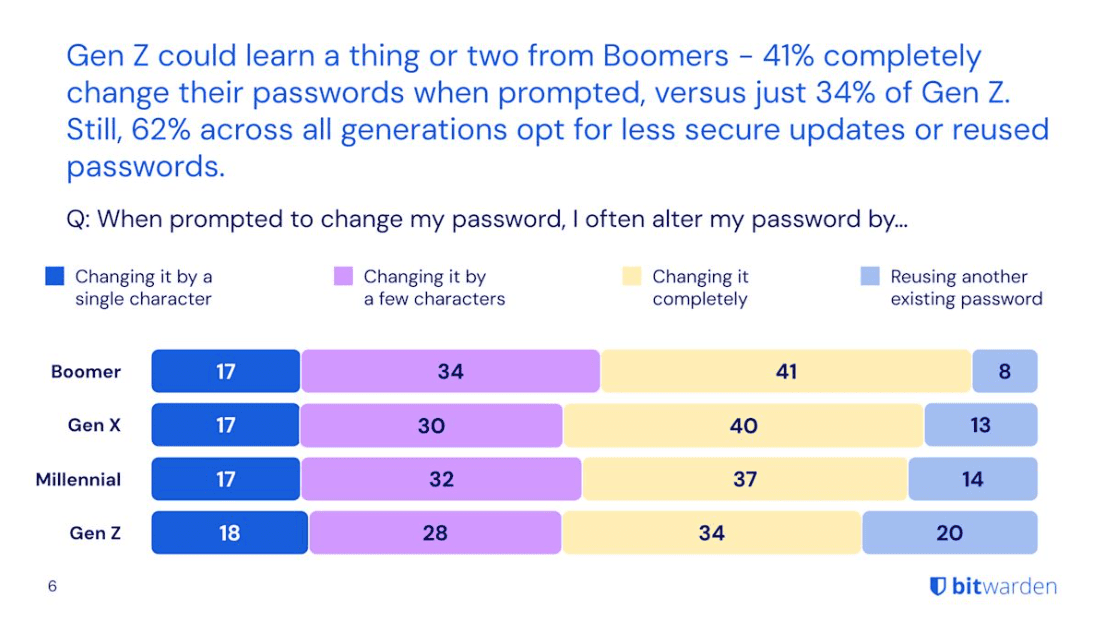
Gen Z can learn from Boomers when it comes to password security
39. Roughly 1 in 3 people (34%) create new passwords by slightly changing an old one, such as adding “123” or “!” at the end—moves that don’t really fool hackers.
40. Even professionals aren’t immune—53% of IT experts have shared passwords through email in plain text.
Password Cracking & Reset Statistics
While you might think your password is strong enough, modern tools and techniques can often break it in seconds.
Cybersecurity experts report that 51% of common passwords can be cracked in less than one minute using automated tools.
Below are the password stats that show how fast passwords are being cracked today and how often users are forced to reset theirs.
41. Out of 193 million real-world passwords analyzed, 45%—or 87 million—could be cracked in under a minute by smart algorithms.
42. Password length makes a huge difference—a 9-character password might take a year to guess, but just one more character can push that time beyond a year.

Password cracking time
43. Even among stronger passwords that use lowercase and uppercase letters, special characters, and numbers, 5% can still be cracked in under a day. However, 85% of those would take over a year, demonstrating the importance of complexity.
44. Over half (57%) of the passwords analyzed included common dictionary words, which made them far weaker—half could be cracked in under a minute, and 67% in under an hour.
45. When it comes to managing passwords, 21% of Americans say they often reset them.
46. 68% had to change multiple passwords after one was compromised, and 18% admitted they used a variation of the old one, which leaves them open to future attacks.
47. Over half of users reset a password once a month or more, mainly because they can’t remember them.
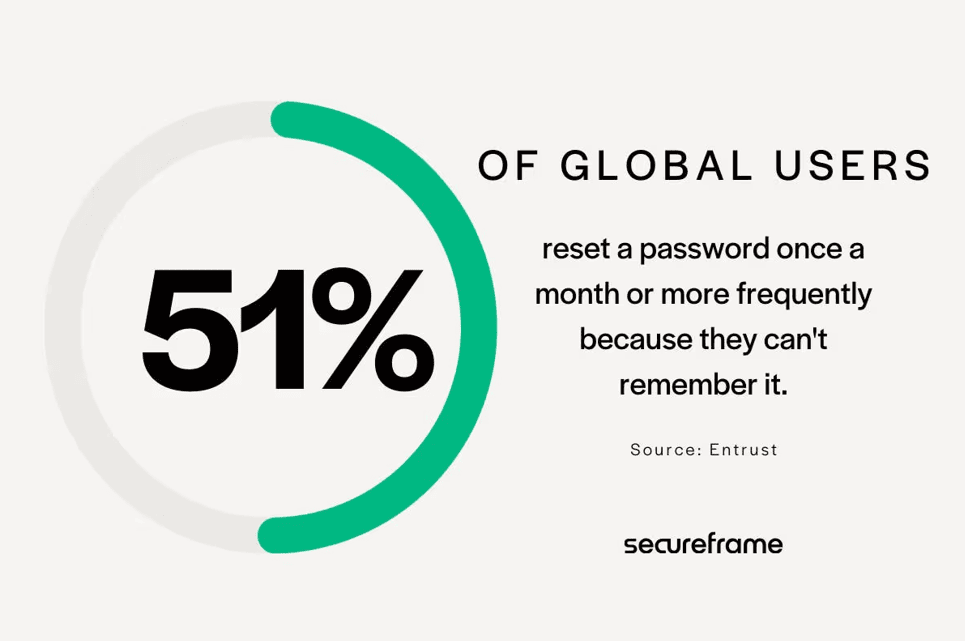
Majority of users reset a password every month
48. 15% reset a password at least once a week, which shows how often people struggle to manage their logins.
49. When asked how long they keep the same password, 43% of Americans reported keeping it for over five years, and only 9% follow the recommended practice of changing passwords every six months or sooner.
Password Manager Statistics
With so many accounts to keep track of, more people are turning to password managers to stay organized and secure.
The following password stats show how password managers are being used and their role in protecting user credentials today.
50. The global password management market is growing fast and is forecasted to reach $2.9 billion by 2027, with an annual growth rate of 20.7%.
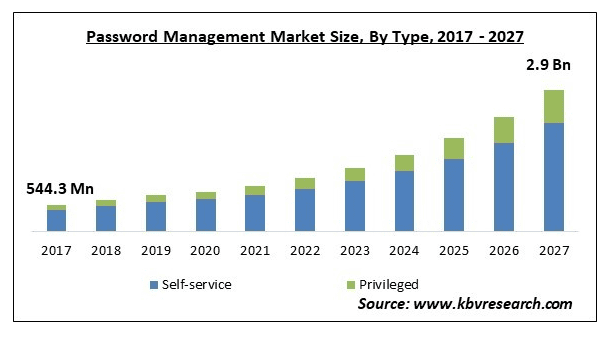
Password management market size
51. Among Americans who use password managers, 21% use LastPass, followed by Keeper (10%), McAfee True Key (8%), Bitwarden (8%), and Google Chrome’s built-in manager (8%).
52. Security is the top reason half of users choose to use a password manager, showing how people want better protection for their accounts.
53. Bitwarden’s 2022 survey found the biggest reasons people avoid password managers: 38% feel their current method works fine, 32% don’t want to pay, 27% don’t know which one to choose, 27% fear a hack, and 21% don’t know how to begin.
54. Even though many don’t use one yet, over 75% say they’d consider a password manager if it was easy to use, secure, and affordable.
55. People who use password managers are less likely to be victims of password theft—only 17% experienced identity or credential theft compared to 32% of those who don’t use one.
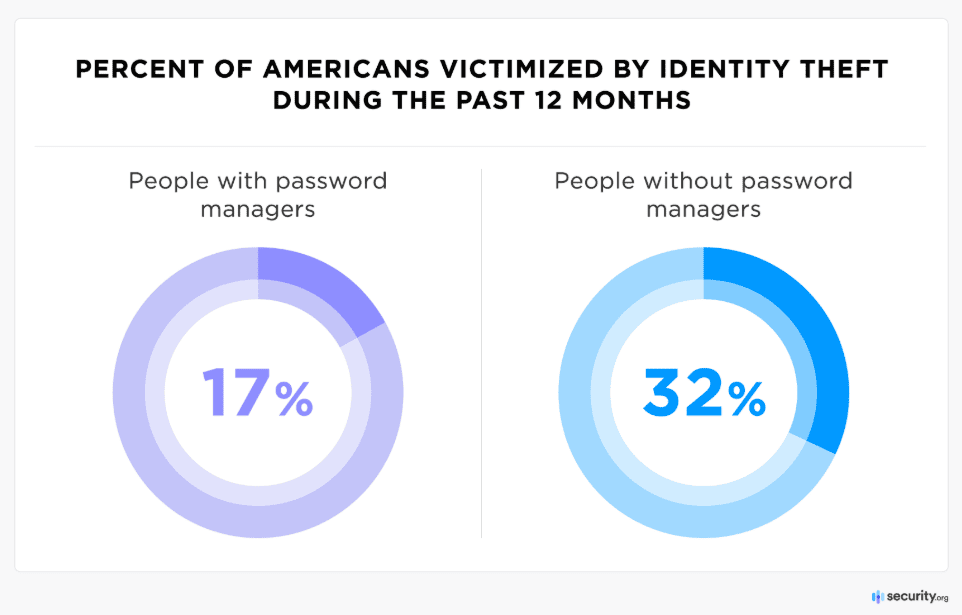
Percentage of Americans facing identity theft
User Awareness and Behavior
People might understand that strong passwords matter, but their habits often tell a different story, with many still using risky shortcuts that leave their accounts wide open to threats—even when they know better.
The following password stats highlight the gap between what people know about password safety and how they actually behave online.
56. Around 75% of people worldwide don’t follow well-known password best practices, even though many are aware of the risks.
57. 89% of users know that reusing passwords is dangerous, yet only 12% actually create unique passwords for each account.
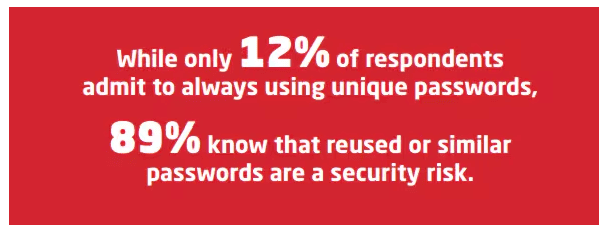
Users know that reusing a password comes with risks
58. Managing passwords is a major source of stress—69% of Americans feel overwhelmed by how many they have to remember, and 45% worry their passwords aren’t strong enough.
59. Even though 68% agree that password strength is more important than how easy it is to remember, most still rely on memory and reuse passwords rather than using password managers or secure tools.
60. In the U.S., 46% say they make passwords that are easy to remember, even if they’re less secure.
61. Shockingly, 28% of people don’t take any special steps to manage or protect their passwords—they don’t use a manager, don’t change them often, and don’t follow basic security steps.
62. One study found that 76% of people have been locked out of an account at some point because they forgot the password.
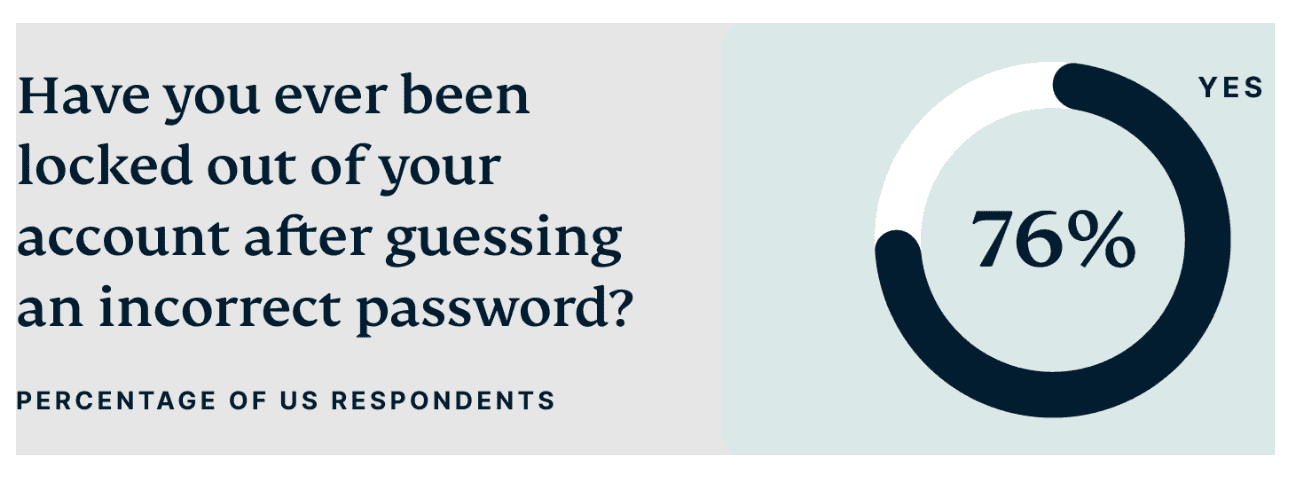
Most people get logged out as a result of guessing wrong password
63. 44% of users started using password managers mainly because they were tired of forgetting passwords and wanted a simpler way to keep track.
Industry-Specific Password Statistics
Not every industry takes password security as seriously as it should. When you compare fields like healthcare, finance, retail, and education, the differences in risk and readiness become clear—with some sectors showing major progress and others still lagging behind.
The healthcare industry alone accounted for nearly 30% of all data breaches in 2024, many linked to weak or stolen passwords.
The following password stats reveal which industries are most vulnerable to password threats and which ones are stepping up their security game.
64. A study of third-party data breaches affecting Fortune 500 companies found that 20% of passwords used were just the company’s name or a version of it, making them incredibly easy to guess.
65. The hospitality industry topped the list for using company-name-based passwords the most.
66. Surprisingly, “password” remains one of the most used passwords across all industries, and in healthcare, “vacation” is oddly popular.

Most popular password by industry
67. Human resources had the strongest password variety, with 31% of their passwords being unique, while telecom lagged behind with only 20% uniqueness.
68. 59% of financial companies were found to have over 500 passwords that never expire—a major risk.
69. According to a 2024 Dashlane report, the industries with the best password habits were tech, media, education, transportation, and hospitality.

Share of passwords among the top 5 industries
70. The worst-ranked sectors for password security were legal, manufacturing, construction, healthcare, and energy/utilities.
The Future of Passwords
As technology continues to evolve, the way we log in is also changing.
While passwords may still be prevalent for now, new trends like biometrics and passwordless authentication are gaining momentum rapidly.
The following password stats show where passwords are heading next—and how the future of login security is already taking shape.
71. The passwordless authentication market was valued at $16.2 billion in 2023 and is forecasted to increase at a CAGR of over 10% through 2032.
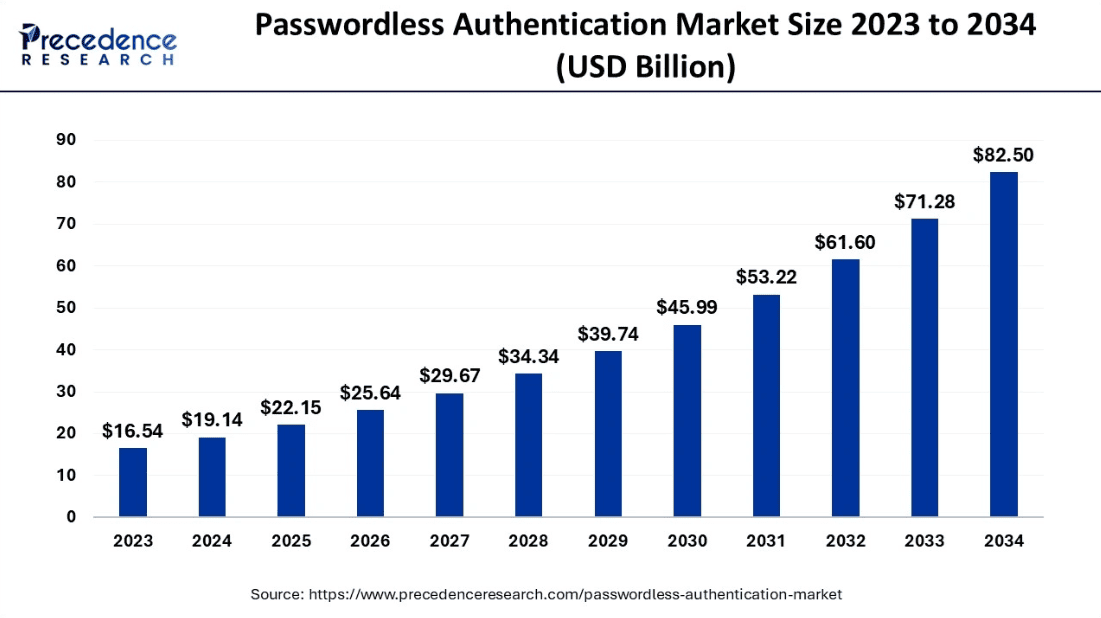
Passwordless authentication market size
72. In the U.S., 45% of people think passkeys and passwords will exist side by side, while 22% believe passkeys will eventually replace passwords entirely.
73. In the UK, 52% of consumers believe biometric authentication is safer than passwords, and 42% consider it a better protection for their personal information.
74. Among U.S. cybersecurity leaders, 23% said lack of skills and 20% said limited budgets are major barriers to going passwordless.
75. 87% of IT pros believe tools like hardware tokens, key pairs, and certificate-based login could help build a more secure password-free environment.
Conclusion
Passwords may not be perfect, but they’re still the first line of defense for most online accounts. As cyber threats grow more advanced, the way we create, store, and protect our passwords becomes more important than ever.
While the future may lean toward passkeys and biometric logins, today’s best protection still comes down to using strong, unique passwords, enabling multi-factor authentication, and relying on trusted password managers to keep everything secure and easy to manage.


